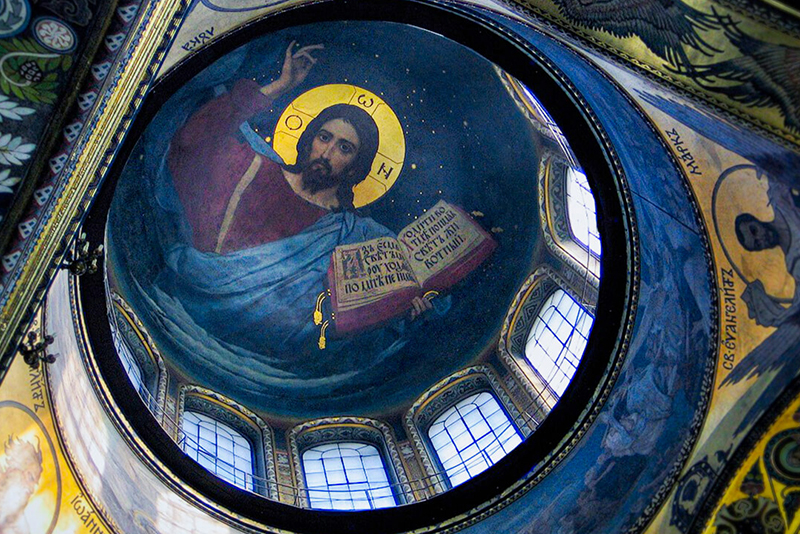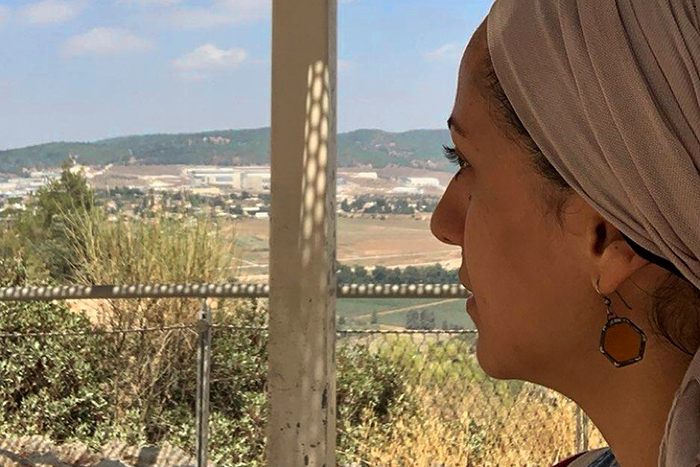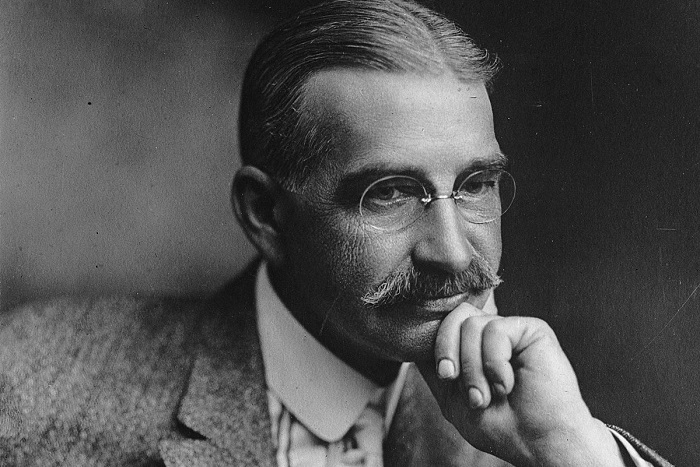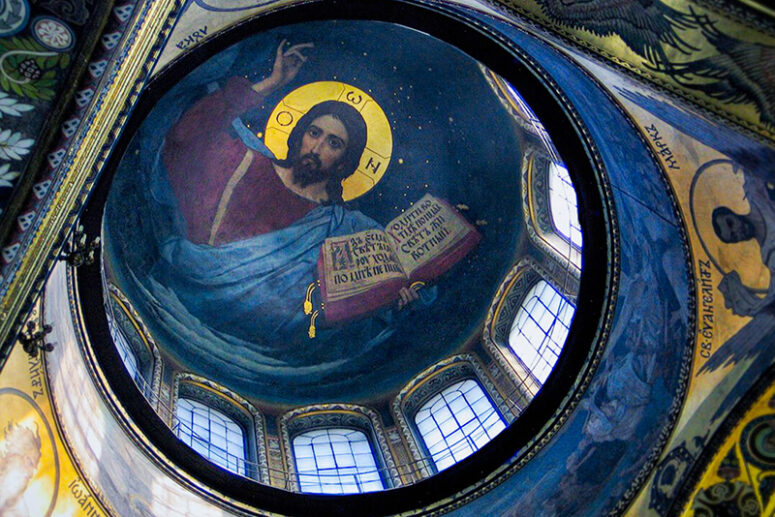
Victor Mikhailovich Vasnetsov rightfully earned himself a prominent place among the great Russian religious painters.
At the height of his artistic career, the visual contemplation of God – as old Russian icons were called – were almost unknown. There were almost no skilled artisans to clear the old icons from the layers of imperfections that had built up over time, and painters who came to be inspired could not see the masterpiece under the layers of soot on the wooden boards. In the 19th century, the age of positivism, many came to see the medieval tradition as a hangover from the dark ages destined for the dump heap. Praying before the dark boards was the mainstay of the commoners, whereas the bright and demanded realism in art; they wanted to see the real life in the pictures. Russian religious painters chose as their models Italian Renaissance masters, and their works were little different from most other secular paintings. The painters of the time displayed great talent, technical mastery and immaculate techniques, but most still could not cross the line that made them genuinely original in their representations of the gospel narratives – despite moving quite far away from the Church tradition. Many such works were remarkable for their focus on the universal, human-interest aspects of the biblical narratives, but not on the religious ones. Vasnetsov was different. Son of a rural priest, he allowed the spirit of God “to blow where it chooses” in all of his works.
One of his most notable contributions to Russian iconography was his fresco in St. Vladimir Cathedral in Kiev. He was the lead painter in this project. He decorated the dome, the middle nave and the icon of the main Iconostasis. From 1885 to 1896, he painted over a surface of more than 2000 square metres.


The virgin and child detail is perhaps one of his best-known frescoes at the Cathedral of Saint Vladimir. This depiction of the Mother of God with the infant Christ on her arm stepping out of the cloud of golden light and walking in the skies immediately became one of the cathedral’s most beloved frescoes after its dedication. The mural is a marvellous representation of the femininity, spirituality and maternal love of the Holy Virgin, and the image of the infant Christ in her arms creates a sense of the magnitude of the great deed ahead of him.
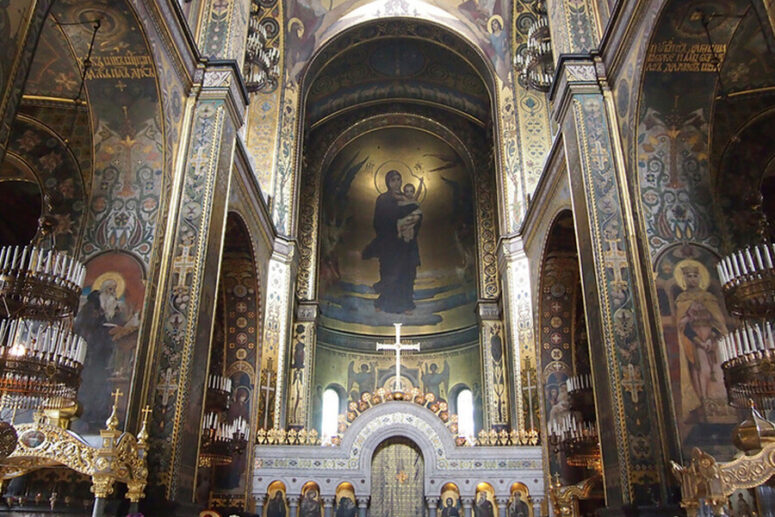
This work of Vasnetsov was revered as a true icon. Legends circulated in Kiev that the part of the wall originally assigned to the icon of Duke Vladimir had revealed the figure of the Virgin Mary, taken as God’s blessing for Vasnetsov’s work.
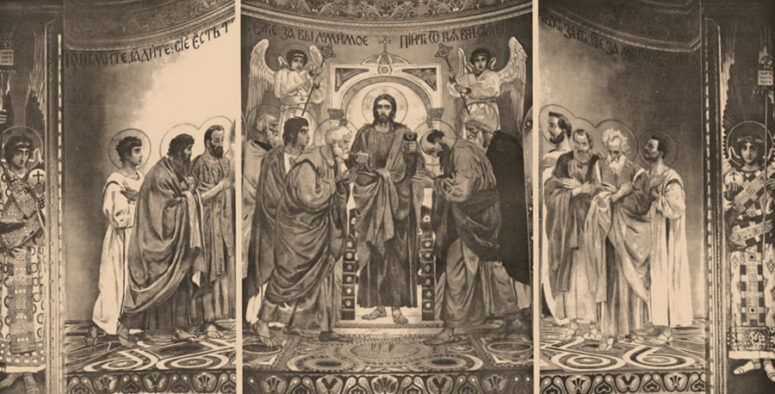
Under the fresco, Vasnetsov painted the mural “Eucharist” that closes the theme of Christ, starting in the mural of the Virgin Mary in the upper part of the wall. The Eucharist is a fine representation of the images of the Apostles. It conveys the wisdom of John the Forerunner, the breadth of Saint Peter, the harsh asceticism of St. Paul. On both sides of the mural, we see images of the Archangels Michael and Gabriel clothed in garments of gold cloth.

At the top of the central dome is the mural of Christ the Pantocrator. The piece creates a sensation of volume; we see volume in the figures, clothing and even the stars behind Christ, that seem in motion. The Lord is holding the Gospel in his left hand, and his right hand is raised in a blessing.
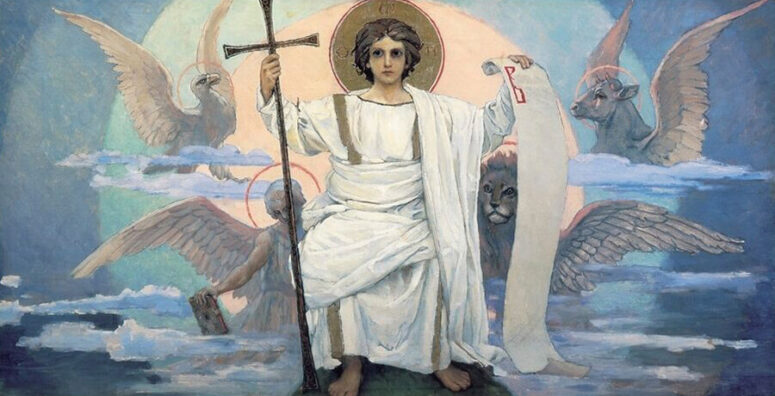
The fresco “Only-begotten Son the Word of God” depicts Christ in His youth. It is remarkable by its range of colours representing the deep blue and gold of the sky. Around the figure of Christ, Vasnetsov portrays the images of animals (an allusion to the Book of Revelation), symbolising the four evangelists.
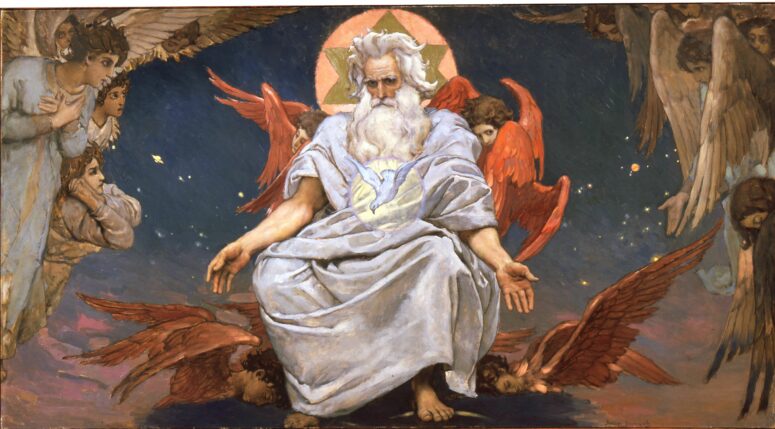
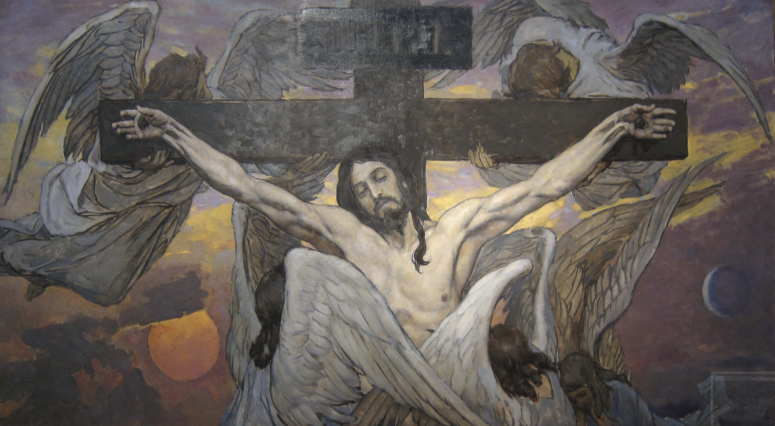
The mural “For God loved the world so much He gave us His only-begotten Son” is composed of two parts. The upper part depicts the Saviour on the cross, who accomplished His great mission of saving mankind at the cost of His great torment and death. Below the cross, he depicts a raging storm, nature’s response to the death of the Saviour. The angels at the Cross are hiding His body from view; two angels are holding on to the crossbar as if trying to lift the cross from the earth. The upper part presents the perspective of Heaven. It depicts the grieving Father, who had given up His Son for slaughter. His wide-open arms leave us in no doubt as to the depth of His feeling. The Seraphims stand around his throne not daring to look up.
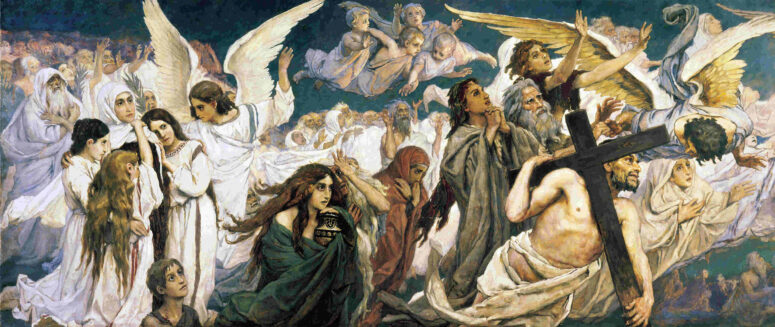
The fresco “Before the gates of Paradise” shows the liberated Christ and the holy men and women standing at the gates of heaven. In the centre of the three-part mural are the images of the three archangels – Michael, Gabriel and Raphael. On their right is the robber who believed on the cross. Standing next to him are Adam and Eve. Eve’s hands are folded together in prayer and in apparent disbelief at the reality of regaining the paradise once lost. Surrounding them are Abel, Mary Magdalene and other great saints, including the Holy Equal-to-the-Apostles Duke Vladimir with his wife Anna and his children Boris and Gleb.
Altogether, in his murals in Saint Vladimir’s cathedral Vasnetsov depicted 15 narratives and 30 faces. Every image is enclosed in a decorated frame distinct from all others and underlining the peculiarities of each.
In addition to religious works, Vasnetsov also painted narratives from Russian History. The cathedral was built in honour of the 900th anniversary of the Christianisation of Russia, and the theme of the history of the Christian faith was central to his murals.
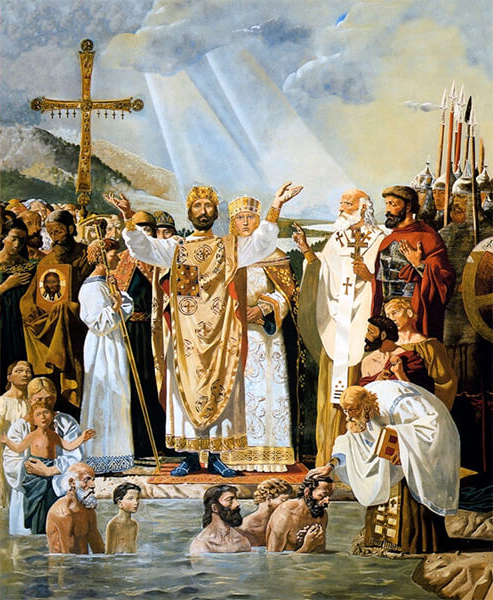
Having completed his frescos, Vasnetsov compared his feat to lighting a candle to God. He considered them a project of his whole life. In his lifetime, Vasnetsov distinguished himself by bringing visual arts from the narrow world of museums and galleries to the wider public, thus bringing together the commoners and the upper classes, the people and the intellectuals. His works conveyed a common set of values and beliefs to which everyone could relate. He was convinced that the best place to do so was at church, as there is nothing no work more sacred and fruitful for an artist than decorating a temple.

Translated by The Catalogue of Good Deeds
Source: https://obitel-minsk.ru/lutschije/2021/12/ya-postavil-svechku-bogu

